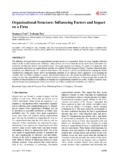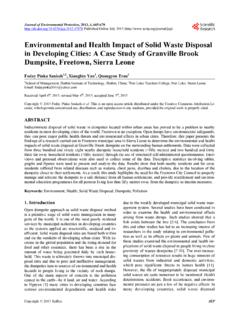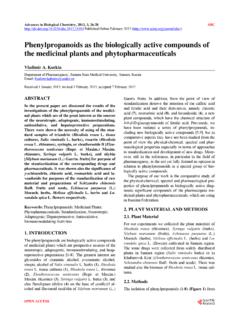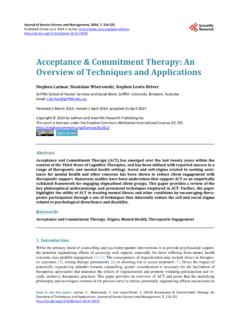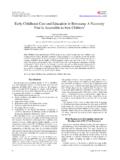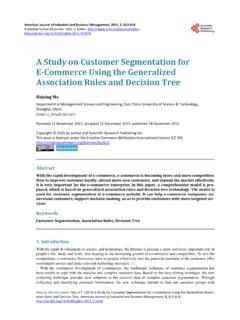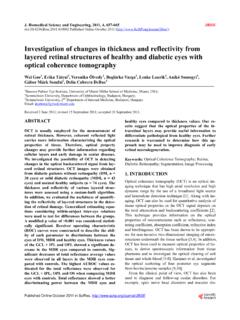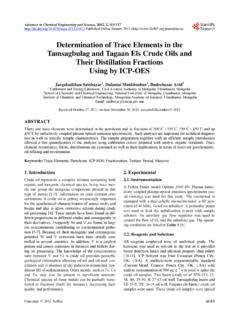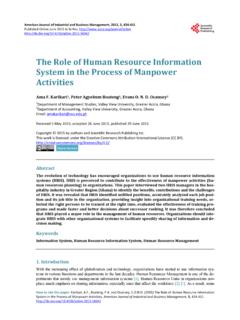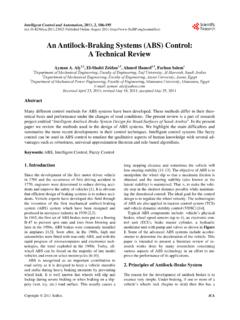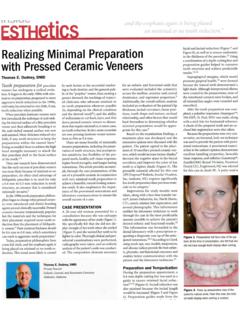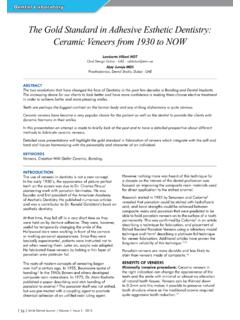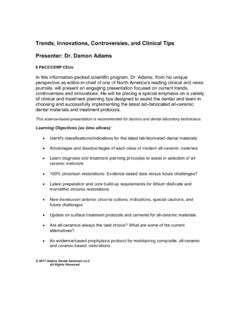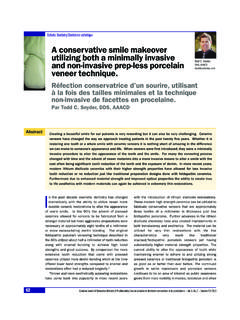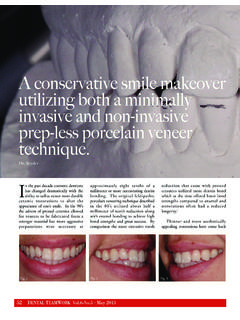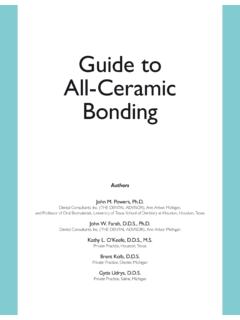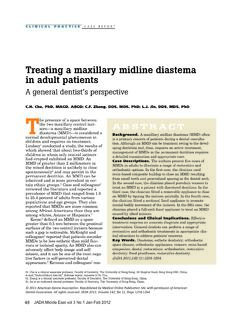Transcription of Ceramic Laminate Veneers: Materials Advances and Selection
1 Open Journal of Stomatology, 2014, 4, 268-279 Published Online May 2014 in SciRes. How to cite this paper: Sadaqah, (2014) Ceramic Laminate Veneers: Materials Advances and Selection . Open Journal of Stomatology, 4, 268-279. Ceramic Laminate Veneers: Materials Advances and Selection Nasrin R. Sadaqah Department of Prosthodontics, Faculty of Dentistry, Arab American University, Jenin, Palestine Email: Received 2 April 2014; revised 5 May 2014; accepted 13 May 2014 Copyright 2014 by author and Scientific Research Publishing Inc.
2 This work is licensed under the Creative Commons Attribution International License (CC BY). Abstract porcelain Laminate veneers have been a common treatment strategy in dental clinics. It is a con-servative method for treatment of esthetic and functional problems in anterior region of oral cav-ity. Wide range of dental ceramics is now available on market for fabrication of Laminate veneers. Clinician should have enough knowledge regarding the composition and properties of these mate-rials in order to be able to choose the appropriate one according to clinical situations.
3 Keywords Laminate Veneers, Dental Ceramics, Ceramic Veneers 1. Introduction Since its introduction in 1938 by Charles Pincus [1], Ceramic Laminate veneer restorations have proven to be durable and aesthetic restorative procedure for treatment of teeth in the front area of the mouth. Ceramic Laminate veneers are more conservative than crowns [2], and maintain the biomechanics of an origi-nal tooth with a success rate of approximately 93% over 15 years of clinical use [3]. Because of that the indica-tions of this procedure expanded to a point where its use is now a common practice in dental clinics, the present broad range of indications for Ceramic Laminate veneers includes [4]: 1) Correction of alternations in tooth shape or position.
4 2) Changes in morphology of teeth with microdontia or tooth transposition. 3) Presence of diastemas and/or poor incisal embreasures. 4) Repair of incisal fractures. 5) Extensive anterior dental restorations. 6) Enamel alterations (abrasion, attrition, abfraction). 7) Change in tooth color. N. R. Sadaqah 269 8) Anterior guide rehabilitation. 9) Repair of crown and bridge. However, when dealing with this great variety of clinical situations, not all ceramics behave as required. One of the most important factors for clinical success of Ceramic Laminate veneers is the proper Selection of Ceramic to be used.
5 Therefore, it is the purpose of this review article to discuss the ceramics used to fabricate Ceramic Laminate veneers, in order to address some concerns about their composition and their manufacturing technique. In addi-tion, the current review will cover the choice of Ceramic Materials for fabrication of Ceramic Laminate veneers according to clinical indications. 2. Methodology An electronic search of publications was made using electronic databases Medline and Pubmed.
6 Only English language articles were included in this review. A combination of the following keywords was used: Laminate veneers, Ceramic veneers, porcelain veneers, Dental ceramics. All articles from both electronic databases were collected and duplicates deleted. In general the selected articles met the following inclusion criteria: clinical trials, case reports, review or systematic reviews and prospective studies, all written in English. 3. Dental Ceramics Classification According to Composition To improve aesthetics in anterior teeth by mean of Ceramic Laminate veneers several types of Ceramic Materials are used.
7 A brief review is required of the classification of Ceramic Materials in order to define the best choice of each according to clinical situation. There are three possible classifications of ceramics based on: sinterization temperature, composition and manufacturing technique involved. This review focuses on the composition of the material since it offers all the needed information to resolve the problem of current Ceramic choice. Ceramics are classified according to their composition into: 1) Glass based ceramics: Feldspathic porcelain , IPS Empress, IPS Empress II, and e-max Press.
8 2) Alumina based ceramics: In-ceram Alumina, In-ceram Spinell, In-ceram Zirconia, Procera All Ceram. 3) Zirconia Based Ceramics. 4. Glass Based Ceramics The feldspathic porcelain is composed of three main components: quartz, felspate and kaolin, with the basic component being silica dioxide [4] [5]. Feldspars are mainly comprised of silica dioxide (60% - 64%) and aluminum oxide (20% - 23%) and are modified in different techniques to create glass that can be used in dental restorations [6] [7].
9 Feldspathic porcelain has low mechanical properties with flexural strength from 60 to 70 MPa [6], due to the high glass contents in this material they are much more susceptible to fracture under mechanical stress. There-fore, Ceramic Laminate veneers fabricated from feldspathic porcelains gain their strength from good bond in combination with a stiffer substrate enamel [8]. With this material it is possible to have a veneer thickness of less than mm with or without preparation in enamel.
10 The ideal conditions for the bond between the feldspathic veneer and the substrate are the presence of 50% or more of enamel on the tooth, 50% or more of the bonded substrate being enamel; and 70% or more of the margin being in enamel [8]. Traditionally feldspathic Ceramic veneers are fabricated using layering technique which incorporates refrac-tory dies used to support the condensed layers or Ceramic slurry [9]. This technique gives the technician full control over the layers incorporated resulting in a naturally looking restoration.
